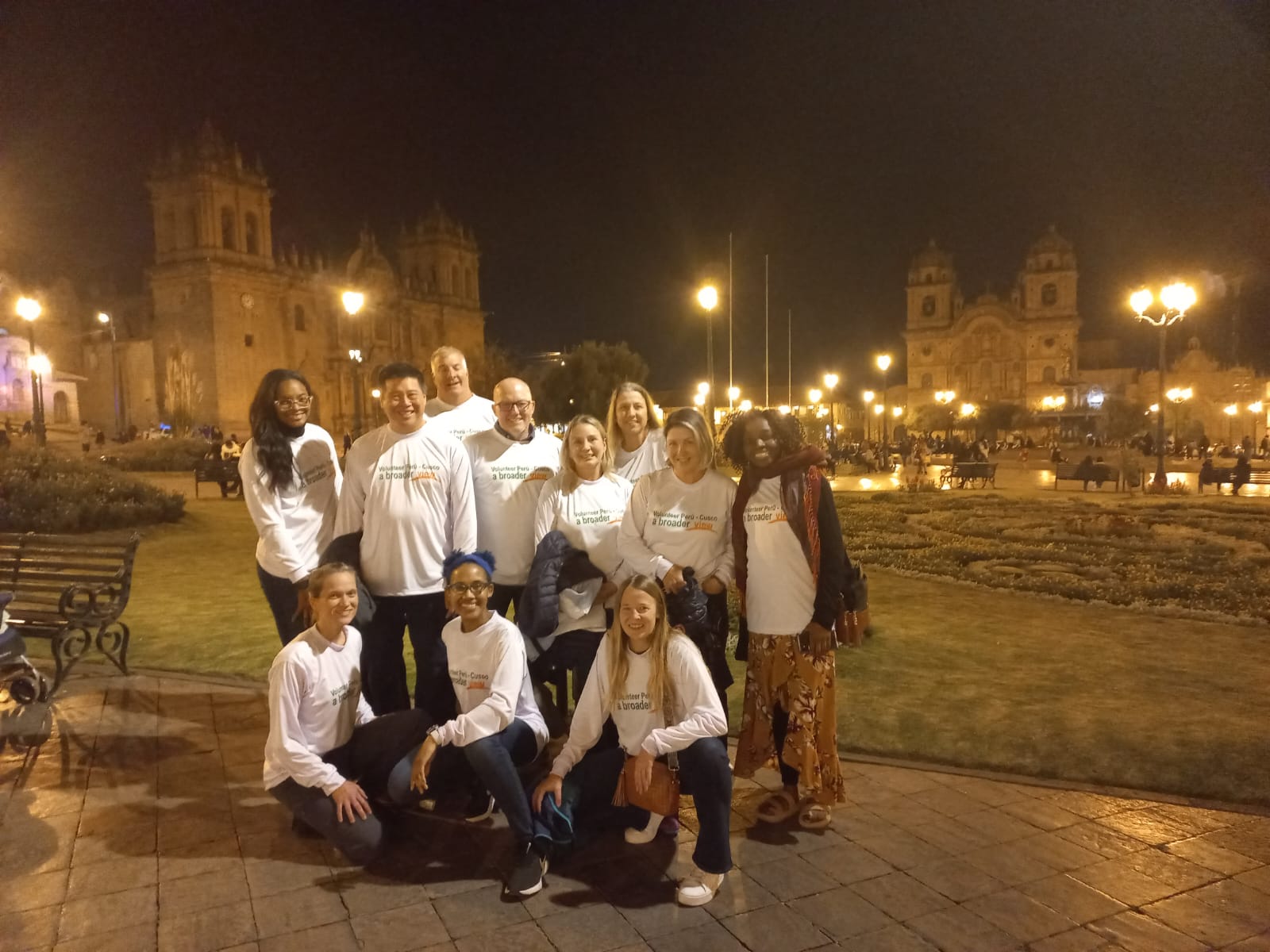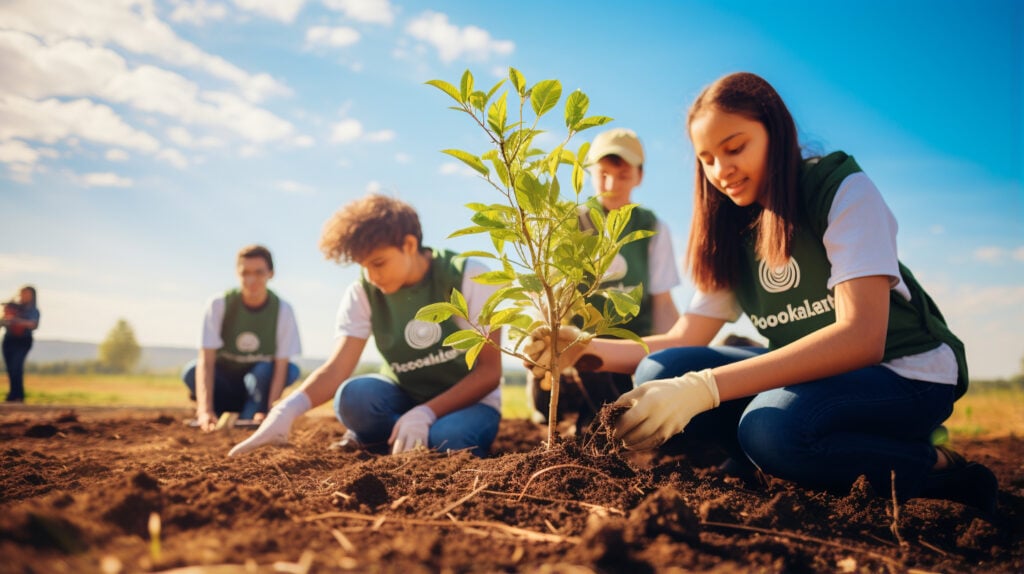Jump right into an exciting journey of knowledge, impact, and growth. We are about to embark on a story of empowering young minds through sustainable education projects and the transformation of communities. Whether you are a teacher, student, policy-maker, or just a keen learner, we bet you’ll find this exploration both intriguing and informative.
In this age of digitalization, climate change, and fast-paced social transformations, equipping our students with the concepts, techniques, and ethos of sustainability has become a non-negotiable aspect of their education. It is the core element fostering a symbiotic relationship between learning, environment conservation, and community engagement. Together, let’s look deep into how integrating sustainability into education sparks the flames of creativity and transforms young minds into responsible global citizens. Get ready for a dive into project-based learning, technology, community empowerment, and the intertwining role of sustainability.
As we roll out the discussions, you may find resonating themes that you can apply in your school, college or community. Stay hooked as we unravel a saga of sustainable educational projects: where learning meets development, and students become changemakers, leading society towards a greener future.
Importance of Sustainability in Education
In an era marked by climate change, drastic shifts in weather patterns, and a collective yearning for a greener planet, the importance of sustainability in education cannot be overstated. This emerging yet impactful approach in education helps to prep our future generations for a world that will heavily rely on sustainable methods—enabling them to understand and appreciate the interconnectedness of society, economy, and the environment.
Significance Felt by Students
It’s not just educators and environmentalists who feel the importance of incorporating sustainability in education; students are eager for this shift too. According to a recent survey, a whopping 85% of students believe that prioritizing sustainability on campus is crucial. They understand that their actions—no matter how small—can leave a lasting, positive imprint on our planet. This sentiment is felt across various disciplines, and not just among those pursuing environmental studies.
- Sustainable practices help students become more environmentally conscious citizens.
- It encourages innovation and critical thinking, essential skills in the job market.
- Students are more likely to engage in sustainable practices outside of school when sustainability is integrated into their education.
Political Influence on Perception
Politics also plays a significant role in the discussion on sustainability in education. It’s interesting to note that there’s a marked difference in the weight placed on sustainability between Democrats and Republicans. Regardless of political affiliations, however, it’s key to remember that sustainability is not just a political issue—it’s a human issue.
“Climate change is no respecter of party lines, and education on sustainability should reflect this universal reality.”
By making sustainability a core part of education, we’re equipping our students with the knowledge, skills, and attitudes necessary to build a more sustainable future. Not only does this have positive implications for the planet, but it also leads to more enlightened individuals who value and protect their environment.
Role of New Technologies in Achieving Sustainability Goals
It’s no secret that the volume of data in the world is proliferating at an exponential rate. What might come as a surprise, however, is how new technologies and analytical approaches are being harnessed to help achieve sustainability goals, particularly in the world of education.
Living in the digital age, we are surrounded by information at every turn – from our social media feeds to news reports, e-mails, and beyond. There is a vast sea of data all around us, presenting both challenges and opportunities.
Here’s where new technological platforms and analytical tools step in. These innovations provide an avenue for businesses, researchers, and educators alike to navigate through these vast data oceans and extract meaningful insights that drive progress towards sustainability objectives.
Switch your focus to the domain of education, and you’ll find an intriguing intersection of technology, analytics, and sustainability. Schools and educational institutions worldwide are increasingly leveraging technology and data insights to not only enrich student learning experiences but also to contribute to broader, global sustainability goals. So, how does this all work?
- Data-Driven Decision Making: Educational institutions are increasingly adopting data analytics to facilitate decision making. This practice helps to allocate resources efficiently, improving educational outcomes and sustainability simultaneously.
- Improved Accessibility: Digital platforms have dramatically transformed the accessibility to education. The benefits of online learning mean education is now more sustainable and accessible, reducing geographic and economic barriers.
- Personalized Learning: Artificial Intelligence (AI) and Machine Learning (ML) can tailor educational content to suit individual learner’s needs better. This personalization boosts learning efficiency, ultimately enhancing educational sustainability.
- Resource Efficiency: Edtech solutions can help schools reduce their physical footprint and achieve efficiency, aiding global sustainability goals. Online resources, virtual classrooms, and e-learning platforms minimize the need for physical resources, thereby promoting environmental sustainability.
The incorporation of these new technologies in education is a testament to the profound impact technology can have on our collective pursuit of sustainability. These advancements are just the beginning; as technology continues to evolve, we can definitely expect an even more substantial impact on our journey towards a sustainable future.
Project-Based Learning and Sustainability
Imagine this; it’s a beautiful day, and you’re in a bright, plant-filled green office. The air feels fresh, your mind is clear, and you’re about to dive into a rich, engaging educational project. Sounds enticing, doesn’t it? This scenario encapsulates a unique blend of two highly progressive paradigms: Project-based Learning (PBL) and sustainability. When these two aspects intertwine, it sparks a dynamic where learning is not just about absorbing information, but about applying it to solve real-world problems and make a positive impact on our planet.
The fact of the matter is, traditional education methods often fail to deeply engage students or motivate them to take an active part in their learning. This is where PBL comes into play. Project-based learning is an educational approach that focuses more on students learning by doing, rather than just sitting in class passively taking notes. Instead, they actively engage in projects, conduct research, collaborate, and create innovative solutions to complex situations.
The benefits of project-based learning are manifold, and this method goes beyond conventional schooling in many aspects:
- Encourages an Enthusiastic Approach: PBL empowers students by giving them the autonomy to explore their own interests and ideas in various projects.
- Enhances Problem-solving Skills: It stimulates creativity and innovation, essential skills in our rapidly evolving world.
- Builds Collaboration Skills: Projects often require teamwork, which provides students with the opportunity to develop their communication and collaboration skills.
- Applies Knowledge: PBL facilitates the application of learned theories into real-world scenarios to solve complex problems.
Knowing these advantages, it’s fascinating to see what happens when we fuse this innovative learning method with the concept of sustainability into a green office environment. Scientific studies reveal that working in such environments can improve cognitive performance by a staggering 61%.
Being surrounded by greenery can significantly enhance a student’s ability to concentrate, reason, and recall information. Green offices also promote healthier lifestyles and improved well-being by reducing stress, increasing comfort, and enhancing mood and happiness levels.
So, when PBL is implemented in a green, sustainable environment, it’s like hitting two birds with one stone. It’s gracefully marrying the progression of education with the importance of taking care of our environment.
It’s not only about creating a shift in our learning methods but also fostering a sense of responsibility towards our planet. In doing so, it equips the future generations with the skills to understand and resolve environmental issues, promoting the much-needed culture of sustainability.
Project-based learning, implemented in a green office, doesn’t just revolutionize education – it offers a chance to reshape our sustainable future. By encouraging students to connect with their environment, it instils a deep-rooted respect for the world we live in, ultimately encouraging innovative solutions that benefit our global community. Therefore, embracing this approach doesn’t ensure simply a distinct journey of learning, but also contributes to the shaping of a more sustainable world.
Empowering Students with Eco-friendly Projects
Ever wondered how to make learning more impactful, immersive, and interesting for students? One tested and proven way is by incorporating eco-friendly projects. Aside from the obvious advantage of creating an environmentally-conscious generation, these projects offer hands-on, practical learning experiences. They also stimulate out-of-the-box thinking and innovative solutions, things that our rapidly-changing world desperately needs.
Gardening Projects
Encouraging students to get their hands dirty, quite literally, can be the launchpad for lifelong green habits. Gardening projects provide an excellent opportunity for students to connect with nature. Growing fruits, vegetables, and flowers on school grounds can instill a sense of responsibility and enthusiasm about the environment in students. Benefits are twofold as these projects can also be used to enhance their understanding of subjects like biology, ecology, and even nutrition.
Recycling and Waste Reduction
Classrooms themselves can be a great place to kickstart recycling and waste reduction projects. It could be as simple as creating a system for collecting recyclable materials or more comprehensive, embracing waste reduction strategies across campus.
These projects not only foster environmental awareness but also serve as a reminder of personal responsibilities towards waste generation and disposal. From pencil shavings to food waste to paper-trail, bringing attention to the waste we generate can lead to conscious habits to reduce and recycle.
Sustainable Design and Energy-Efficiency Projects
Where we learn matters just as much as what we learn. Construction and modernization projects at schools present unique opportunities to incorporate sustainable design and energy-efficient principles. Energy-efficient buildings with solar panels, green roofs, and rainwater harvesting installations can be excellent, tangible demonstrations of sustainable practices.
It’s not just about saving cost and energy, this approach can turn a traditional campus into a living, vibrant, green learning space. And what better model for students to understand the significance of sustainable designs and energy conservation than their own school?
When equipped with eco-friendliness at the core, students can make a significant impact, including reducing carbon emissions and conserving water. It’s about preparing students to meet the real-world challenges of sustainable development, a task that education must rise to meet. A greener and better future is possible, and it starts with educating the young generation in sustainable practices today.
Sustainability and Community Development
The essence of prosperity lies in flourishing communities and sustainable methods of living. Rooted in these behaviours, sustainability and community development interconnect and intertwine, resulting in long-lasting and delightful benefits. Yet, many locations around the globe lack accessibility to such opportunities. Aiming to close this gap, numerous organizations and endeavours focus on elevating the quality of life in these underprivileged communities.
Transformative community development programs are the heart of volunteer travel organizations such as ABV and GIVE. These initiatives help in nurturing individual capacities, enhancing living standards and transforming general livelihood. Their vision is not confined to poverty-alleviation but extends to creating structures and systems promoting sustainable living.
It’s impossible to talk about sustainability and community development without touching on an enormously vital aspect: Women’s empowerment. Across the world, organizations are now implementing women’s empowerment programs, recognizing their potent role in community building and sustainable practices. The sphere of influence that women wield within their communities is far-reaching and profound. Boosting their autonomy and decision-making potential unravels a world of opportunities for community development and resource efficiency.
However, reaching out to women is merely half the battle. Youth naturally inherit the mantle to propel their communities forward. Hence, focusing on youth and women’s empowerment programs greatly enhances the pace and direction of community development. The inclusion and nurture of young minds fuel innovation and stimulate radical transformations required for achieving sustainable development.
On international fronts, volunteer programs have increasingly become instrumental in facilitating significant impacts on community development. They bridge gaps between cultures, build global community connections and foster shared responsibility, all while contributing to sustainable growth. These programs are essential as a medium for change, sparking actions that resonate and ripple through societies, inspiring generations and programmings alike.
At its core, conservation and community empowerment are inseparable pieces of the sustainability puzzle. Hand in hand, they shape visions of vibrant and thriving communities. Empowered individuals conserve their environment, exercising judicious use of resources and propagating eco-friendly techniques. In turn, preserved landscapes yield abundant resources, ensuring sustainable and prosperous communities.
Sustainability and community development are intertwined with the threads of empowerment and conservation. Their synergy resonates with our collective aspiration for a better world. As we journey into an era of transformative change, let’s remember that every step taken towards sustainable community development is a stride towards a flourishing and resilient future.
Role of Data Science and AI in Tackling Environmental Challenges
The emerging era of modern technology could potentially become the game-changer Earth needs in its fight against environmental degradation. Among these emerging resources, two powerful tools stand out: data science and artificial intelligence (AI). When deployed strategically, these tools can play a pivotal role in addressing complex environmental and climate challenges.
Data science and AI harness a vast amount of environmental data collected from various sources like satellites, sensors, and research facilities, helping us gain insights into critical environmental issues like climate change, deforestation, and biodiversity loss. They establish connections between various environmental factors and offer tangible solutions.
Consider some of the impactful ways data science and AI can help:
Predictive Analysis to Forecast Environmental Changes
With data science, we can mine historical and demographic data to produce predictive models of potential environmental changes. AI algorithms can anticipate climate change impacts such as sea-level rises or increases in temperature. Thus, predicting environmental vulnerability and facilitating effective planning and preventative action.
Optimizing Resource Use to Reduce Waste
AI-based models can be employed to optimize resource consumption, thereby reducing overall waste. For example, AI-powered smart grids can optimize energy use, while data analytics can help streamline waste management systems.
Biodiversity Conservation
AI can be particularly effective for tracking and analyzing biodiversity. It can study patterns and trends in flora and fauna distribution and changes over time which can be crucial for establishing conservation strategies.
Monitoring Deforestation
Satellite imagery combined with AI allows for real-time monitoring of deforestation. AI can analyze patterns associated with illegal logging, enabling authorities to take action swiftly.
Here’s an interesting quote emphasizing the significance of these technologies:
“Data Science and AI are not just tools; they are the lifeline for effective action against escalating environmental concerns. They help us understand our planet better, predict its temperamental changes, and manage its resources effectively.”
In essence, data science and AI allow us to approach environmental challenges with a whole new level of insight and precision. By translating raw data into invaluable insights, we can strategize and react proactively to environmental crises. This is not merely a hypothetical but an ongoing revolution, signifying how essential data and AI are in our collective pursuit of a sustainable future.
The promise and potential of data science and AI in tackling environmental challenges are immense. For anyone interested in technology or sustainability, these developments are nothing short of inspiring. After all, our planet’s well-being ultimately impacts every living being that calls it home. Therefore, embracing these burgeoning technologies can be our pathway towards a healthier, greener, and more sustainable Earth.
Special Focus on HIV/AIDS Education and Outreach Programs
With a concerted effort to combat HIV/AIDS, a wave of education and outreach programs have been strategically set up worldwide. By providing people with essential knowledge and resources, these initiatives have made notable strides in promoting healthy living and assisting individuals infected and affected by HIV/AIDS.
Renowned for their effectiveness, HIV/AIDS education and outreach programs have indeed made a significant impact, particularly in high-need communities. They have elevated awareness, facilitated testing, promoted safe habits, and improved the overall health and well-being of countless individuals. In very tangible ways, their deployment has helped change the trajectory of the global HIV/AIDS epidemic.
Within the vast array of these programs, the activities that make standout contributions include:
- Information dissemination: Easy access to vital information about HIV/AIDS is instrumental in dispelling myths and spreading factual knowledge. A deeper understanding of transmission, prevention, and treatment methods can notably lessen the spread of the virus.
- Conducting workshops and training: Working at a grassroot level, these educational workshops and training sessions play an instrumental role in enlightening communities, specifically the youth. By equipping them with accurate knowledge and insight, youth become the ambassadors of change.
- Providing testing services: Regular and free testing services can significantly decrease the late diagnosis of the disease. Detection of the virus at an early stage generally leads to better management of the virus and aids in preventing further transmission.
- Linking to healthcare services: Outreach programs often act as the bridge between infected individuals and quality healthcare services. This connection can drastically improve the health outcomes for those diagnosed with the disease.
- Promoting safe habits: Safeguarding measures like the usage of condoms, safe blood transfusions, use of sterilized needles and syringes, are all conducive steps that these programs emphasize intensively.
Another aspect deeply engrained in these programs is the fight against the often persistent HIV/AIDS related discrimination, offering the much-needed support and counseling services. In fighting this stigma, the programs create an environment for open conversations, thereby normalizing its existence and promoting prevention.
In celebrating these programs, we’re not merely appreciating their contribution in an isolated context. We’re recognising their critical role in uplifting communities, encouraging individuals to take control of their health and, ultimately, fostering a world free from the threat of HIV/AIDS. The success stories shared by the beneficiaries of these programs further serve to validate their worth and inspire the continuation and amplification of such initiatives.
In essence, a special focus on HIV/AIDS education and outreach programs illuminates their contribution to a healthier society. By enhancing knowledge, encouraging prevention, and offering non-discriminatory support, we are shaping a global community that is fully informed, safe, and empowered to combat this life-altering disease. An investment in these programs is indeed an investment in humanity’s shared future.
Impact of Grassroots Level Programs
Grassroots level programs are no less than a beacon of hope. These programs, specifically designed in response to the needs of underprivileged communities, often act as the catalyst for change and upliftment of the marginalized sections of society. Whether it is about providing quality education, health facilities, or ensuring food security, grassroots level programs address these issues most effectively and efficiently.
Let’s illuminate some significant impacts of these programs:
- Community Empowerment: One of the significant achievements is empowering the communities that often feel isolated and unheard. By involving the local community members in decision-making processes, grassroots organizations ensure that their voices are heard and their needs met.
- Sustainable Development: By focusing on long-term impact rather than short-term wins, these programs promote sustainable development. For instance, educating the community about the importance of sustainable farming and providing necessary training makes a long-lasting difference.
- Creates Leadership: Grassroots level programs have a natural knack for identifying community members with leadership potential and nurturing those capabilities. This element is crucial for the sustainable growth of the community.
- Promotes Equality: Since they are designed to cater to marginalized communities, these programs actively work against discrimination and social inequalities. This attempt goes a long way in creating more equitable societies.
As you can see, the grassroots-level programs make tangible, lasting changes, fulfilling needs and sealing gaps in the areas that need it the most. Taking a leaf from the book of these initiatives can provide us with insights into more effective, participatory, and community-centric solutions.
However, while grassroots organizations carry immense potential, they require continuous support from government entities and larger non-profit organizations. Collaborative efforts can make these initiatives more effective, providing sufficient resources and bringing about significant change at a more considerable pace.
So, next time you hear about a grassroots program happening nearby, remember it’s not just a small initiative. It’s a key to unlocking a level of social change that goes beyond the immediate community, reaching depths most systems can’t, and truly creating a difference at the ground level.
Conclusion
The journey to environmental stability and societal empowerment is certainly a challenging one, but with a well-rounded, hands-on education and an earnest global effort, we’ll get there. By infusing educational curricula with eco-centric ideologies, harnessing the power of modern technology, and campaigning for our planet at a grassroots level, we are making significant progress towards securing a sustainable future.
As future leaders, students are at the heart of this change. Providing them with the tools and knowledge to create, nurture, and sustain eco-friendly projects is integral to our success. In the process, they become more enlightened, responsible individuals prepared to continue this much-needed advocacy.
At A Broader View Volunteers, we’re particularly proud of the role we play in this global initiative. Our programs in far-flung communities empower students and locals alike to learn about sustainability and put it into practice. There’s no better time than now to be part of a powerful change. Let’s make every broad view one of a healthier, sustainable world.
Frequently Asked Questions
- What is www.abroaderview.org?
www.abroaderview.org is a nonprofit organization that offers sustainable volunteer projects for students who are passionate about making a positive global impact. They provide opportunities to work on community development, education, healthcare, and environmental initiatives in various countries.
- Why should students participate in sustainable projects with www.abroaderview.org?
Participating in sustainable projects with www.abroaderview.org allows students to gain valuable hands-on experience, develop cultural understanding, and contribute to sustainable development efforts. It also offers a chance to enhance skills, broaden perspectives, and make a lasting difference in communities in need.
- What kind of sustainable projects are available for students?
www.abroaderview.org offers a wide range of sustainable projects for students, including teaching English, healthcare support, construction and renovation, orphanage assistance, environmental conservation, and community development. Students can choose projects based on their interests and skills.
- How long do the projects usually last?
The duration of projects with www.abroaderview.org varies depending on the specific program. Projects can last anywhere from one week to several months. Students can choose the duration that best fits their availability and goals.
- Is there any age limitation to participate in these projects?
The age limitation for participating in projects with www.abroaderview.org depends on the specific program and country. Generally, students aged 16 and above are eligible to participate. However, certain projects may have specific age requirements, so it’s important to check the project details before applying.
-
Safe Solo Volunteering Abroad | Empowerment FemalesThrough Service with ABV

Embrace the adventure of a lifetime with ABV’s supported solo volunteering programs. Create lasting friendships, make a real difference, and explore the world safely under a supportive umbrella. Recommend Peru, Ecuador, Colombia, and more. Table of Contents Introduction to ABV and Solo Volunteering Traveling solo can be a thrilling yet daunting endeavor. A Broad View…
-
Empowerment Through Sustainable programs: Volunteer Opportunities in Peru Cusco

Discover empowering volunteer opportunities in Peru Cusco with www.abroaderview.org. Support sustainable programs and make a positive impact while gaining valuable experiences.
-
Midwives & Obstetricians: Empower Mothers & Babies Abroad

Discover how midwives and obstetricians from abroad can empower mothers and babies through the programs offered by www.abroaderview.org. Make a difference today.



